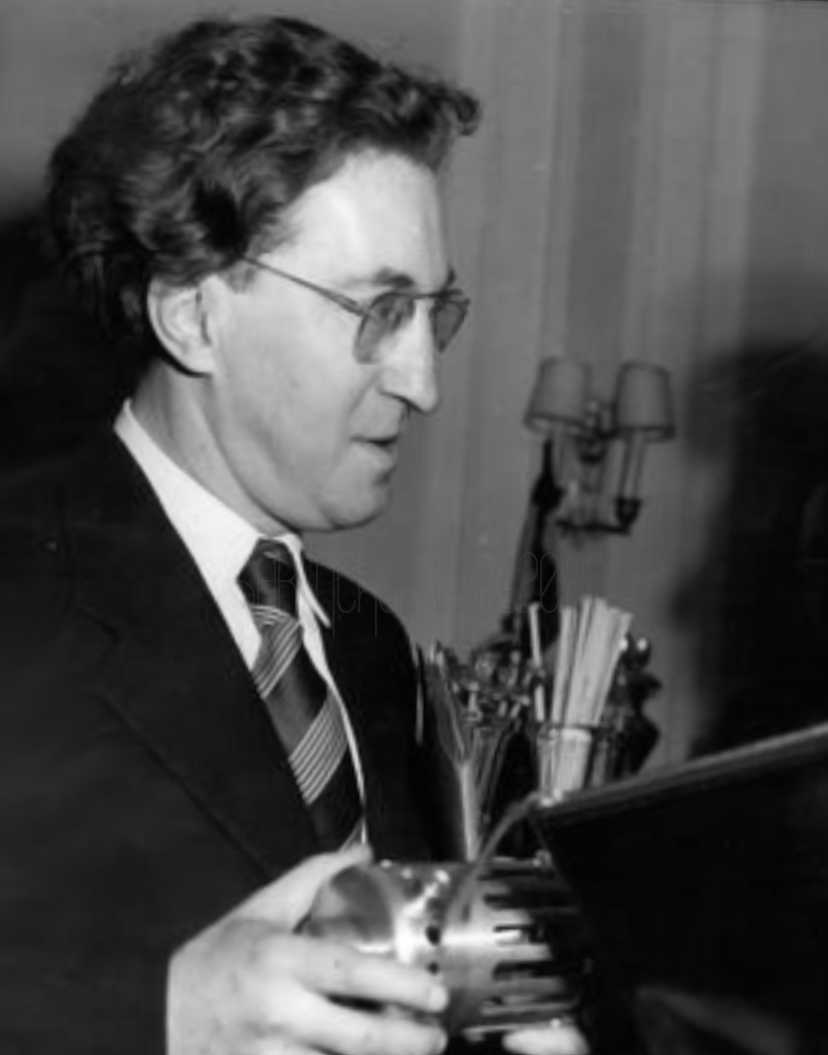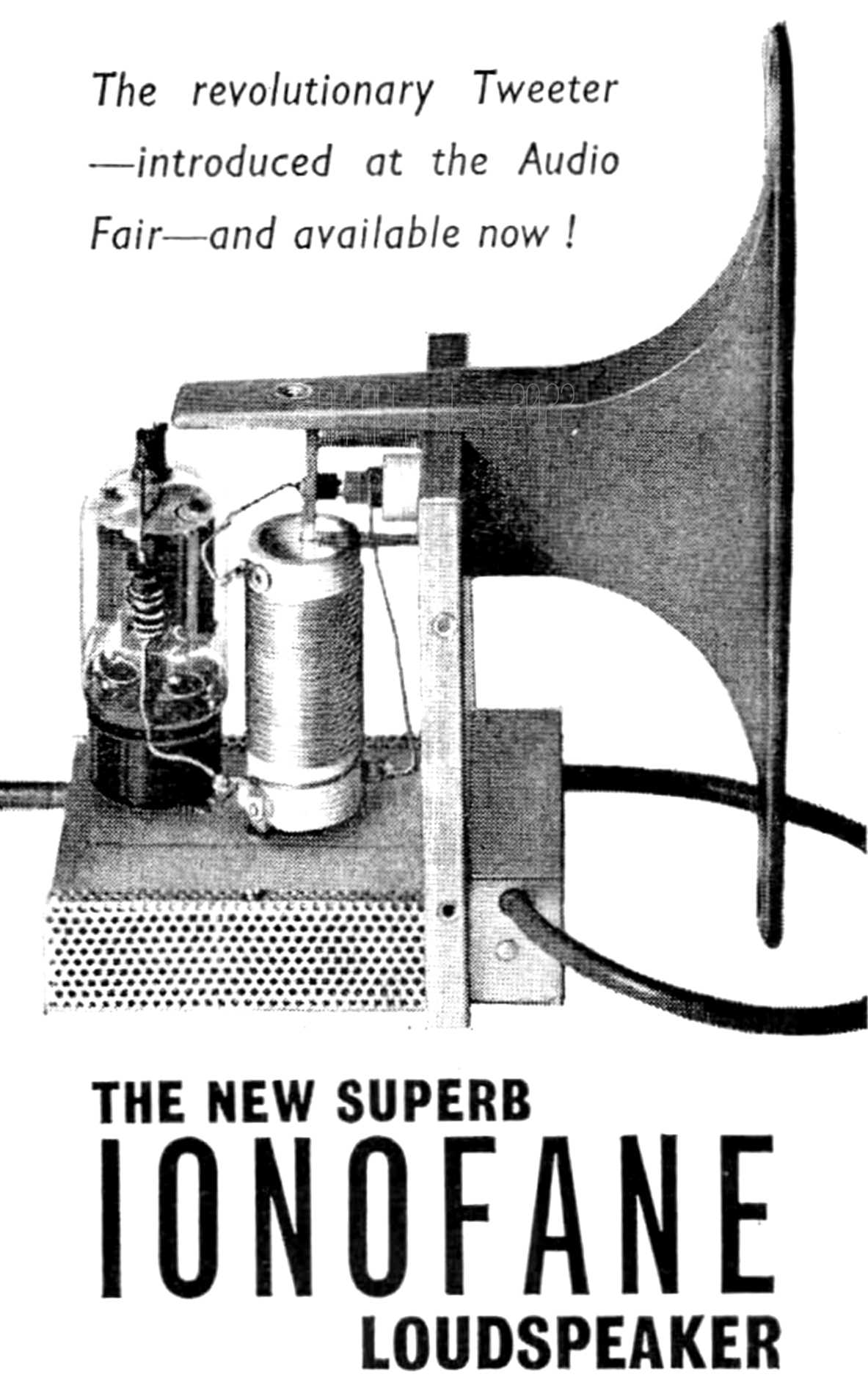As mentioned, the earliest glow discharge plasma speaker in evidence is the patent from Dr. Phillips Thomas granted in 1927 which used a DC arc and differed considerably from Klein's design. Although an earlier patent on RF based plasma tweeters from George Ramsey (1928) shows that Klein wasn't the first to think of the idea, Klein's version of the plasma tweeter addressed many of the problems with that design. Klein was the first to produce a commercial plasma loudspeaker of any type. The earliest article from Klein was in L'Onde electrique in 1946, laying out the grounding for his first tweeter the Ionophone made by Audax (France) 1952, Plessey (UK) in 1954 and Telefunken (Germany) 1955 who helped improve the design, notably the electrode. The first reviews in 1952 from the same magazine and also Wireless World were both favourable. These had a round section horn loaded plasma, driven by a Tesla coil RF supply and valve (tube) circuitry.
Klein's own paper in Acta Acusitca in 1954 was followed by 3 patents (with more in other countries) in 1956 and 1958. He used these patents and intellectual property to license his designs for manufacture around the world by other companies. This revised Ionophone was named the Ionovac by DuKane's Ionavac division from 1957 and also manufactured by Electrovoice as the T-3500 in 1958 and Fane Acoustics Ionofane (or Ionofone depending on what you read) from 1960. The Ionofane was used by Bowers & Wilkins as the tweeter in their P2H loudspeaker and for a short period the P2H was licensed by Sony for sale in Japan. Even as late as 1974, a German company called Tecnac created an Ionofane clone.

